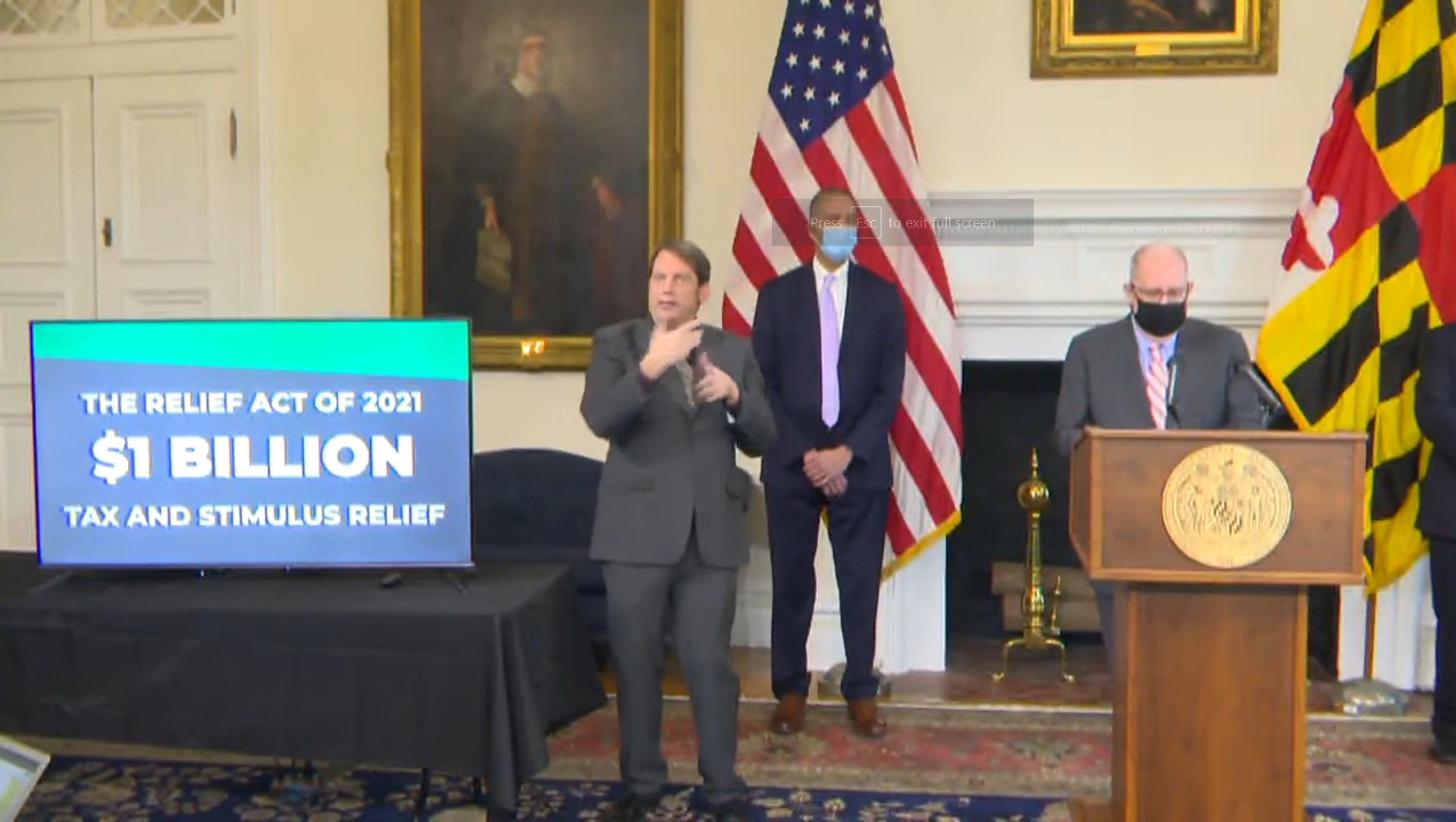ANNAPOLIS, Md. — Despite economic turmoil brought on by the COVID-19 pandemic, Gov. Larry Hogan announced a budget aimed at providing economic relief to Marylanders while also funding essential services.
Those were the main goals of an ”economic recovery budget” that Hogan, R, unveiled Tuesday and that he declared was balanced for the seventh consecutive year without tax increases, layoffs or service cuts.
The governor said that his budget wouldn’t be possible without a freeze on non-coronavirus spending as well as other emergency measures aimed at easing the state’s fiscal burden.
The main highlight was a $1 billion stimulus bill unveiled Jan. 11 that pledged targeted relief for struggling Marylanders, including direct stimulus to 400,000 residents.
The stimulus also includes a permanent repeal of personal income taxes on unemployment benefits as many residents are still without work after pandemic-related job losses.
In December, 6.8% percent of Marylanders were unemployed compared to 3.6% the year prior, breaking a four-year skid of the jobless mark dating back to 2015.
Small businesses will also see relief in reductions to the sales tax, and a provision to keep up to $12,000 in sales tax as cash in an effort to help businesses stay open and people on the job.
State health departments and disability services will see an increase in funding well above grant formulas, according to the governor.
Hogan called this funding important as the state continued to grapple with the COVID-19 pandemic that sickened 1,972 more people and killed 53 in the state on Tuesday.
The governor also unveiled sweeping increases to education funding across the state for what he pointed out was a record seventh year in a row.
The governor has pledged $7.5 billion in funding for K-12 programs in the state, some $213 million higher than mandated in legislative spending formulas.
Of those funds, $833 million has been pledged to new school construction in every jurisdiction, something Hogan said has not been done before in the state.
The budget also calls for an additional $411 million for higher education projects and includes projects at Historically Black Colleges and Universities.
“I’ve always believed that every single child in Maryland deserves a world class education regardless of what neighborhood they grow up in.
“This is especially important now as we’re working to address the learning loss brought on by the pandemic,” Hogan said.
Despite the added school funding, the governor and state Legislature remain on different paths in regard to education.
State lawmakers are expected to override the veto on the Blueprint for Maryland’s Future, a sweeping change to Maryland’s education system based on recommendations from the Kirwan Commission.
A fiscal analysis conducted in 2020 found that the bill could cost up to $3.3 billion in Fiscal Year 2023 before declining to just over $1 billion over the following two years.
Hogan has repeatedly attacked the legislation due to the potential for tax increases on Maryland residents still reeling from the COVID-19 pandemic.
Hogan on Tuesday said the two sides still don’t see eye-to-eye on the matter:
“We still don’t agree with $4 billion in increases that would cost the average Marylander $6,800 per year,” the governor said.
Legislation aimed at solving the decades-old fight between the state of Maryland and its Historically Black Colleges and Universities could also cause friction between legislatures and the governor.
House Speaker Del. Adrienne A. Jones, D-Baltimore, has proposed a bill that would provide approximately $580 million in funding to the state’s four historically black institutions.
Hogan has in the past presented an offer in the $200 million range to end the case that began in 2006, however both the Legislature and the colleges have objected to that amount.
The full scope of the budget is expected to be revealed for the first time Wednesday when the budget is presented to the General Assembly.

